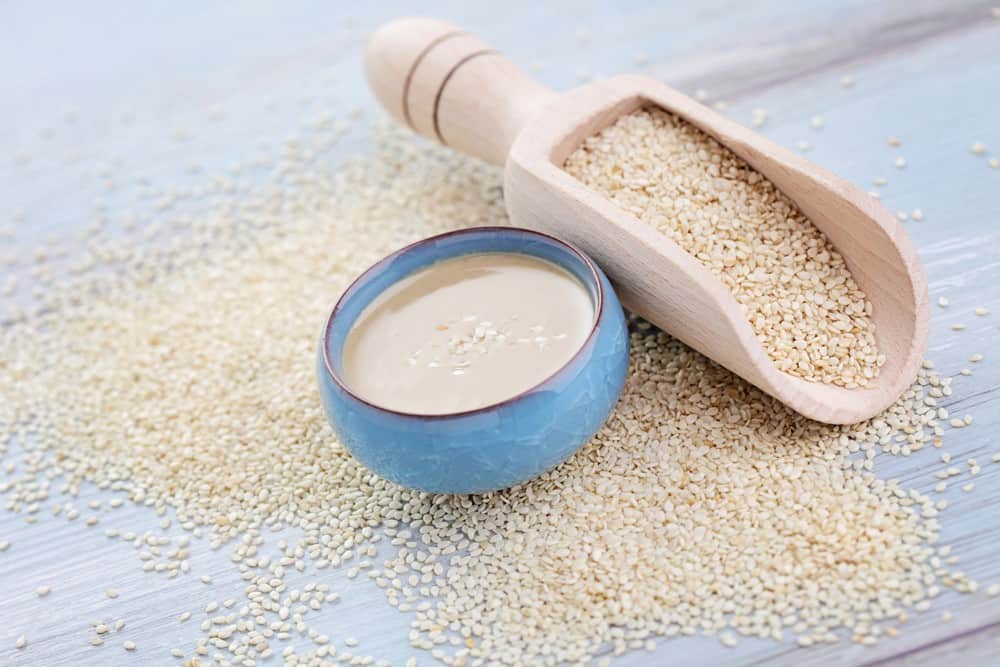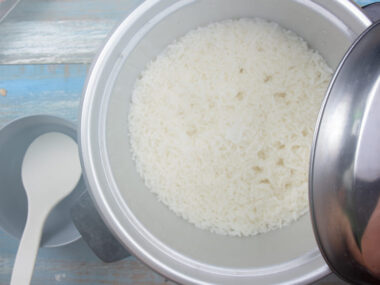Tahini adds the oomph factor to a variety of side dishes. Whether it is your hummus, cookies, or a dip, a little tahini is all that is required.
It is important to safely store the leftover tahini so that it does not go bad. Once opened, you can store tahini in the fridge or even leave it unrefrigerated.
If left unrefrigerated, you must store it in a cool and dark place away from sunlight. If you are using homemade tahini, it is better to store it in the refrigerator.
Below, I will discuss tahini in detail, so let’s take a look and learn more about this delicious and versatile ingredient!
How To Store Tahini Properly?
Most store-bought tahini has instructions mentioned on the jar about the storage. These instructions vary from brand to brand. So, we would advise you to read the procedure on your pack carefully and follow it as it is.
However, if there are no instructions mentioned on the pack or if you want to increase the shelf life of your tahini, read below as we have given a detailed procedure on how to store tahini after opening.
Can Tahini Be Left Unrefrigerated?
You can leave tahini unrefrigerated. This depends on your consumption, whether you plan to consume it in a short time period or a long time period.
If you are going to consume tahini within a week or so, it is perfectly fine to keep it in the pantry or kitchen away from sunlight, even if you are living in a hot climate area where the temperature and humidity are high.
However, if you are going to use tahini for months, it is better to keep it in the fridge. That way, the taste and quality of the product will remain the same.
Do You Have To Refrigerate Tahini After Opening?
We would advise storing tahini in the fridge after opening it, but it is not compulsory. You can leave it at room temperature as well. Your tahini will still be edible in this case, but the quality might deteriorate.
On the other hand, if you have homemade tahini, you must refrigerate it as it does not contain the preservatives used in store-bought tahini. Due to this, the homemade tahini becomes bad after some time very easily if left at room temperature.
How Can You Tell If Tahini Is Bad?
Since tahini contains oil as a natural preservative, it is highly unlikely that it will turn bad. However, improper storage and oxidation can make tahini bad. So, here is how you can tell if tahini has gone bad:
Unpleasant Smell
When you open the jar of spoiled tahini, you will get a very strong metallic or soapy smell. This is an indication that tahini has gone stale and should not be consumed.
Bad Taste
If there isn’t mold in the tahini, there is no harm in tasting it as it would not harm your health. So, grab a spoon and scoop out the paste and taste it.
If it tastes extremely bitter and petrol-like, it means the tahini is no longer edible. Sometimes, you might even get the taste of overstayed cooking oil. It also means it is time to discard tahini paste.
Hardened Paste
If your tahini was not properly sealed, the paste will harden and lose its consistency. This tahini has lost its freshness and is no longer appropriate for consumption.
Mold Growth
Check the lips of your tahini jar lid regularly to see for mold growth. It is an ideal place for mold to grow. Never consume molded tahini as it can damage your health.
Also, do not think that cleaning the mold from the lid makes it safe for consumption. You must throw it away and buy a new jar of tahini for use.
How To Store Tahini After Opening?
Once you have opened the bottle of tahini, it is important to store it correctly in order to maintain its quality and shelf-life. So, here is what you can do to use leftover tahini in your future side dishes:
Choosing The Correct Place
Always store the leftover tahini in a cool and dry place away from any kind of heat and sunlight. When you read this, the refrigerator sounds like the best place for tahini. Well, it is in some cases, but it is not necessary to store tahini in there always.
If you live in a place that is cool and dry all year, you can store tahini on the pantry or kitchen shelf. Just make sure no direct sunlight falls on it. In winters too, tahini can be left unrefrigerated.
However, during summers when the humidity is high, you should store tahini in the refrigerator to maintain its taste
Moreover, storing tahini in the fridge can make it hard and lumpy as the oil separates from the paste. So, take it out one hour before use, keep it at room temperature, and mix well. Then, you can add it to all your favorite dishes!
Choose The Accurate Vessel
If your store-bought tahini paste comes in a jar or container with a lid, store them in it only. Sometimes tahini is available in a can at supermarkets. So, once opened, you must transfer the leftover tahini into a container with a lid to prevent air from entering it.
In case no such vessel is available at your home, transfer the paste to a vessel and cover it with aluminum foil or plastic wrap. Make sure you check tahini from time to time to see if the plastic wrap or foil is intact.
Always Close The Lid After Using Tahini
After using the tahini, close the lid immediately. If left uncovered at room temperature, dust and dirt particles can enter tahini making it unpalatable.
Additionally, if you keep tahini in the refrigerator without covering it, the tahini will lose all the moisture and become hard. Then, it will taste bad and smell foul as well.
What Does Rancid Tahini Taste Like?
One of the major risks with tahini is rancidity. It means the taste and smell of tahini change from normal. This happens when the oil present on the top of the tahini paste oxidizes.
Rancid tahini does not pose major health risks, however, it will become inedible. Thus, when you open a jar, take a scoop of tahini paste and taste it.
If it tastes stale and damp, throw it out as it has become rancid.
What Does Tahini Smell Like?
Good tahini smells nutty and has a rich flavor to it as it contains roasted sesame seeds. The smell is strong, earthy, and bitter.
Tahini does not smell like other nut butter as they are sweet whereas tahini has a bitter taste. Thus, a little bit of tahini is added to the side dishes.
Does Unopened Tahini Expire?
There is no sure answer to how long tahini will last if unopened after the expiration date has passed. It greatly depends on how you store it.
So, keep the unopened jar in a really cool and dry place where no sunlight reaches it. Moreover, some manufacturers use preservatives and stabilizers, so the tahini paste can last for more than 2 years. Others do not use any of it, so their shelf life is just six months at times.
When companies mention the expiration date on the pack, it means that tahini will retain its best quality till that date. After the date passes, tahini might start to lose its nature.
However, this does not mean you cannot use tahini now. You can use tahini for another six to twelve months with proper storage procedures.
If you are keeping the unopened bottle in a pantry or your kitchen shelf, you can expect tahini to be fine even after six months from the expiry date. An unopened tahini bottle in the refrigerator, on the other hand, lasts for twelve months after expiration.
At times, unopened tahini might have a foul smell as well as an unpleasant taste even before the expiration date has passed. It is because you did not store it correctly.
Can You Freeze Tahini?
You can freeze tahini in the refrigerator. For this, we would recommend you make smaller batches of tahini since you require just a few spoons of tahini in your entire dish.
Freezing an entire container and then thawing it for use does not sound suitable for regular use as tahini is sensitive to temperature changes.
So, let’s how you can freeze tahini in smaller portions:
- Take an ice cube tray and add tahini paste to it. In general, an ice cube tray can hold up to 2 tablespoons of tahini which is sufficient for your side dishes.
- Put it into the freezer uncovered. Wait for 2-3 hours so that it is completely frozen. You can leave tahini overnight as well.
- Transfer the frozen tahini cubes to an airtight container or transparent ziplock bag. Take out cubes as and when required and thaw them before using.



